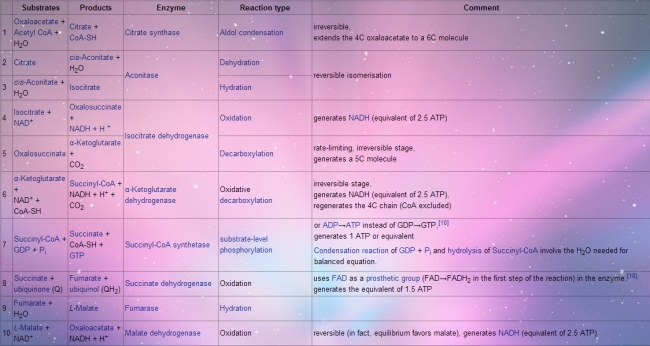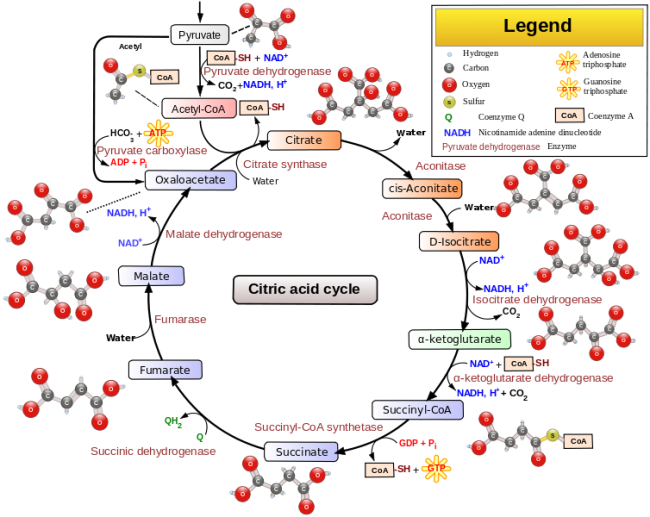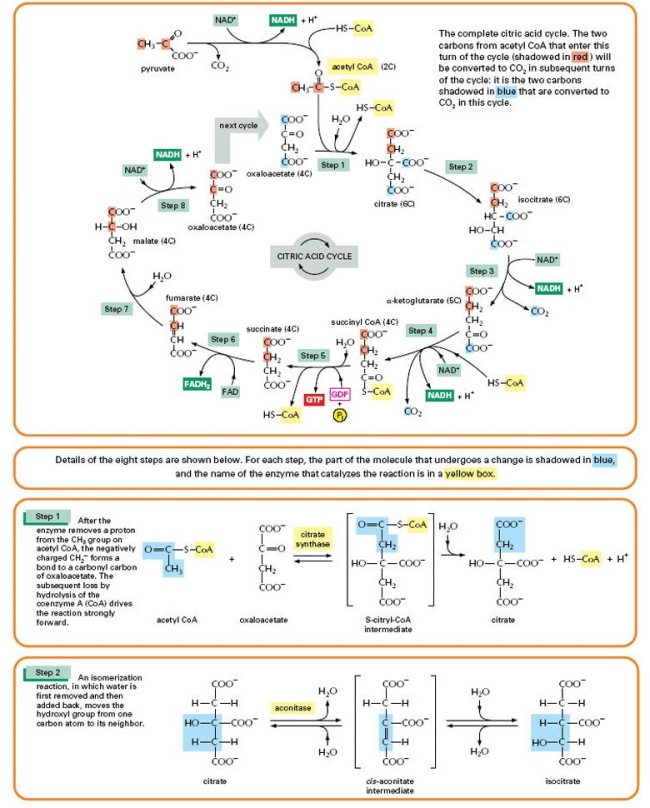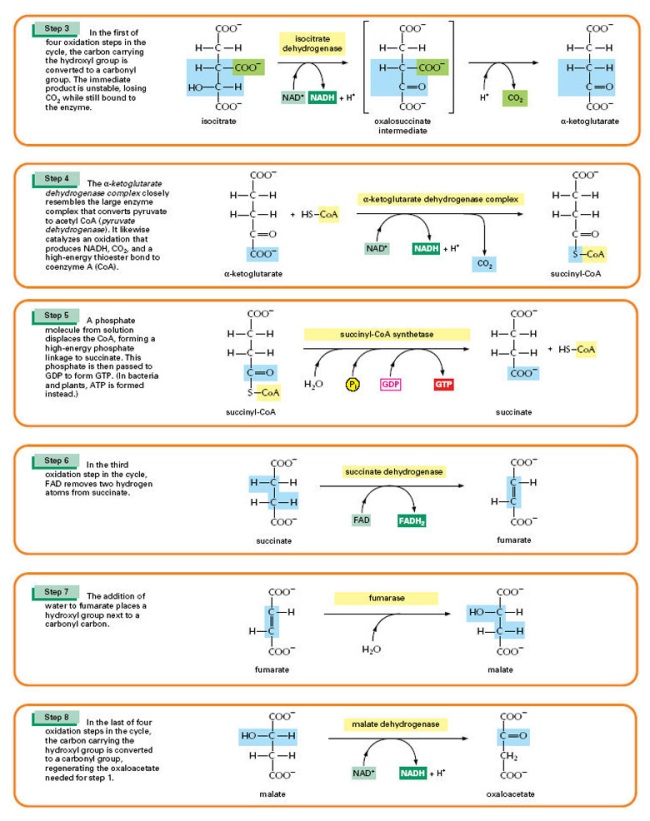Video link: Khan Academy. 2009. “Electron Transport Chain” http://www.youtube.com/watch?v=mfgCcFXUZRk
After viewing this video, I gathered that after glycolysis, 10 NADH and 2 FADH2 are left. These are used in the Electron Transport Chain. This process is used to generate ATP. In the video, he states that the NADH is indirectly responsible for 3 ATP and each FADH2 is indirectly responsible for the generation 2 ATP molecules. This is because the electrons that are entering the ETC are at a slightly lower energy level than the ones of NADH. The oxidation of NADH (NADH—->NAD+ + H+ + 2e– ) is the 1st step of the ETC. The last step involves (2e– + H+ + ½ O2 —-> H2O) the reduction of oxygen to water; the oxidation of NADH to NAD+.
The 2e- used in oxidation then gets transported to a series of transition molecules, entering slightly lower energy states. They are then used in the reduction of oxygen to water. When an electron goes from a higher energy state to a lower energy state, it releases energy.This energy is used to pump protons across the membrane of the cristae of the mitochondria. The oxidation and reduction processes occur in protein complexes located in the matrix of the mitochondria. When these proteins release energy, it is used to pump Hydrogen protons in particular into the outer membrane. The oxidation of NADH releases its by-product. As a result, the outer membrane becomes more acidic than the matrix. An electric gradient/potential is the created between the outer (positive) membrane and the inner (negative) membrane.
When this gradient forms, the hydrogen protons try to re-enter the matrix. ATP formation occurs in the cristae via the protein ATP synthase. These hydrogen ions enter the inner matrix via ATP synthase. This axle like structure on the top of the matrix as well as an extended part at the bottom allows the ions to enter via the spinning of the axle on the top. An ADP molecule and its 2 phosphate groups attach to 1 part of the protein. The phosphate also attaches to another part of the protein. As the inner axle turns, the outer housing of the membrane due to electrical charges will squeeze the ADP and the phosphate together to form ATP. This occurs on 3 different sites simultaneously producing 3 ATP.
Summary:
Electrons are moving from the NADH and the FADH2 to essentially reduce O2. As they do this, they release energy as they go from 1 molecule to another. This energy is used to pump Hydrogen protons into the outer compartment of the mitochondria. The gradient created, makes the hydrogen protons want to enter the inner matrix. As they re-enter, this force drives the ATP Synthase “engine” which produces the ATP.
Left from Glycolysis:
10 NADH —-> 30 ATP
2 FADH2 —–> 4 ATP
Glycolysis and Krebs Cycle produces:
4 ATP molecules.
This amounts to 38 ATP molecules, from 1 molecule of Glucose.





